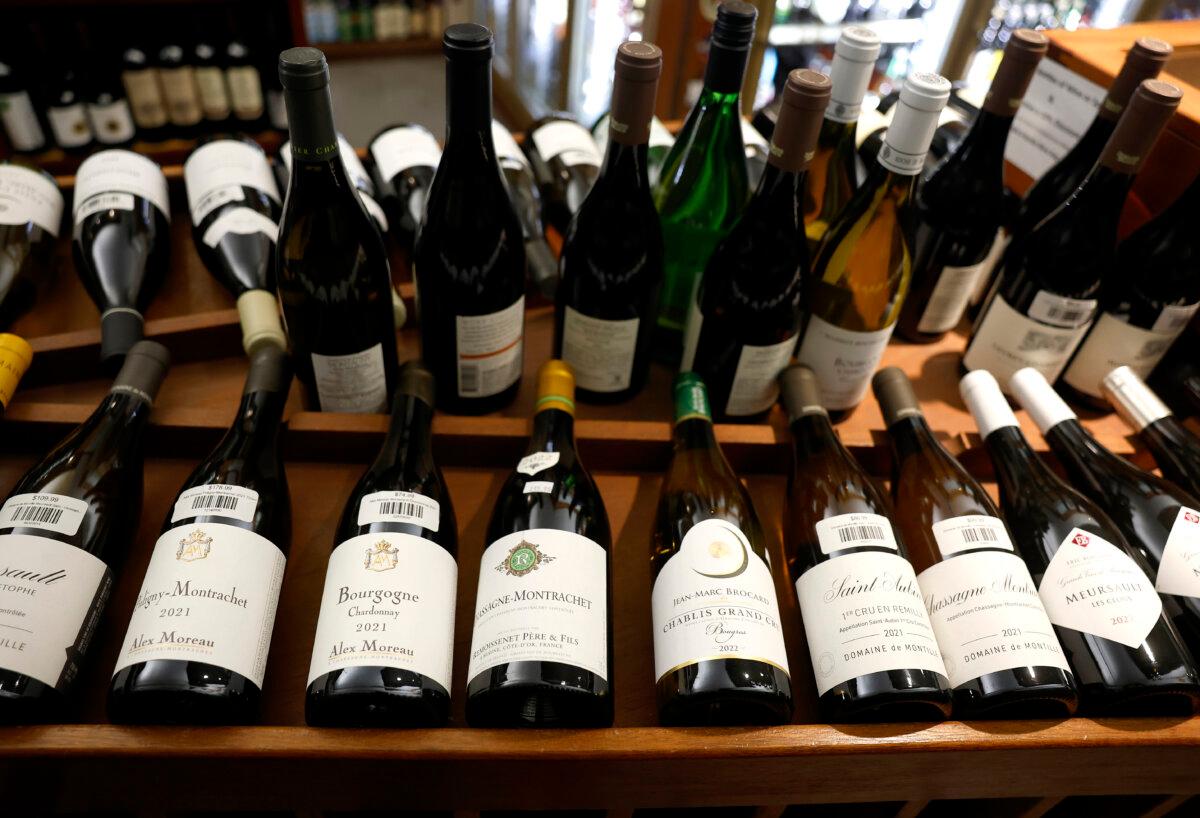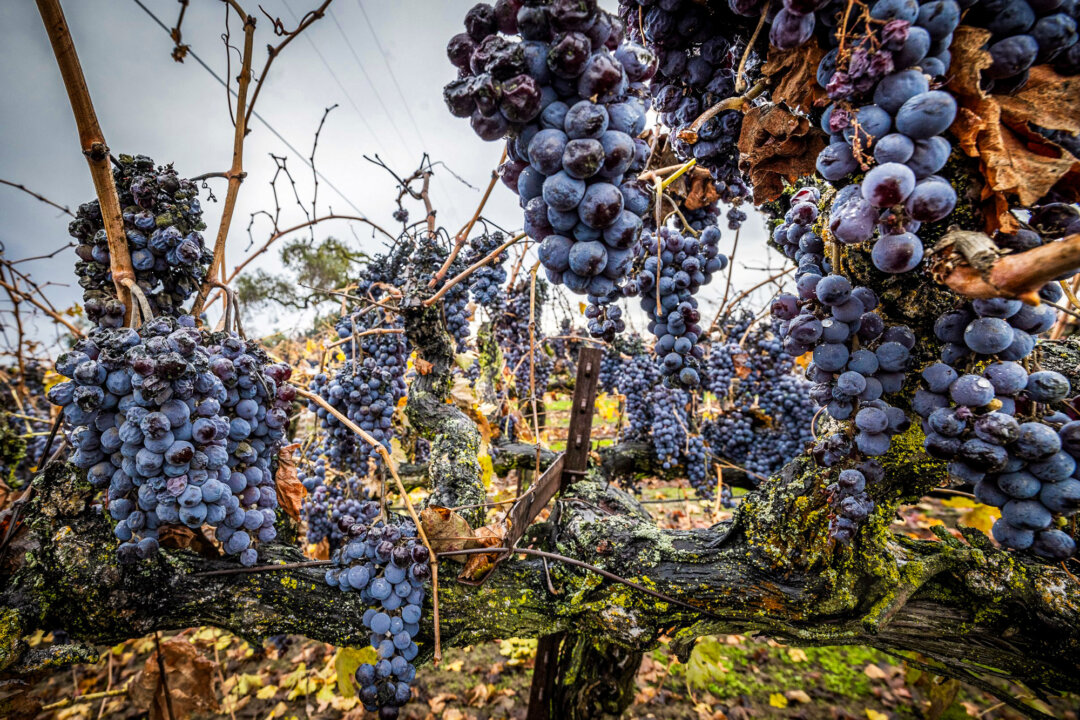‘A lot of people don’t want to speak out on this because it’s become such a politicized issue,’ a winemaker says.
LOS ANGELES—Amid the clamor surrounding President Donald Trump’s whirlwind tariff announcements over the past week, some in California’s wine industry are taking a sanguine view.
Stuart Spencer, a winemaker and executive director of the Lodi Winegrape Commission, based in the state’s Central Valley, said recent media coverage has mostly focused on the perspective of restaurants and retailers that rely on imports, and ignored that of growers and winemakers.
”Speaking for many California grape growers, I think many of them would feel [the tariffs are] supportive and feel it’s necessary to level the playing field,” Spencer said. “Because they’re not competing on a level playing field.”
Growers and producers in the California wine industry have in recent years taken a beating amid waning global demand and a flood of cheap, subsidized imports, leading many farmers no choice but to let thousands of acres of grapes die on the vine.
Since the pandemic, small, family-owned operations in the Central Valley, where around two-thirds of the state’s total output is produced, have been especially hard hit.
Jeff Bitter, a fourth-generation farmer and president of Allied Grape Growers, an industry organization based in Fresno, said grape growers and winemakers are tired of hearing about how bad tariffs are.
“In the wine industry, they’re not bad across the board. They’re not bad for everyone involved, particularly on the production side. If you’re a California grape grower or winemaker that doesn’t import, then tariffs are not bad for you. They’re perfectly fine,” Bitter said.
Recent media coverage of California’s wine industry has highlighted unease about Trump’s threat to impose a 200-percent tariff on all wine, Champagne, and alcohol products from the European Union.
The Trump administration on Wednesday announced a 90-day pause on reciprocal tariffs for most of the country’s trading partners, a stunning reversal just hours after steeper duties had gone into effect for dozens of countries. In the meantime, the administration will levy a 10 percent rate on all global imports. The exception is China, which Trump said on social media would see its import taxes hiked to 125 percent, the latest volley in an escalating trade war.
Since that war began, Spencer said, California wine orders going to export markets may have been put on hold, but so have imports.
“We are hearing from producers and wineries that their domestic orders are increasing,” he said, noting his own family winery, St. Amant Winery, saw a surprising uptick in interest.
“We do business with a national chain. The day after the 200 percent tariffs were announced, they reached out to us about our brand. We hadn’t received an order in six months, and have now received three orders in the past three weeks.”

Spencer points out that 80 percent of the state’s wine grapes are grown by small, independent family farms who simply cannot compete with massive subsidies the European Union provides to its wine sector.
“It creates a very unlevel playing field and continues to keep a lot of supply in the marketplace that should probably be removed to allow the market to correct itself,” he said.
California is also at a disadvantage in its own domestic market, where it competes against millions of gallons of cheap imported wine, often blended, distributed, and retailed by the same organizations that sell California wines—and subsidized by a federal loophole in the country’s duty drawback program.
“This has had a profound impact on the health of the agricultural communities in the Valley here,” Spencer said. “You can see thousands of acres that have not been pruned or harvested last fall. And the new growing season is starting and these vineyards are going to come off. They’ll be pulled or just abandoned.”
Producers in California also contend with high production costs and a demanding regulatory environment.
“In California, the costs to produce are probably the highest in the world in terms of grape production, or wine production. And it has to do with our regulatory environment—all the environmental standards we adhere to, and the wage and hour standards, employee treatment,” Bitter said.
He said farmers aren’t complaining about those high standards, but can’t compete with dirt-cheap competition that doesn’t adhere to any of the same.
Spencer and Bitter both suggest a more nuanced approach than Trump’s 200-percent proposal might be appropriate, as well as measures such as government support in the form of marketing or promotion, or assistance for farmers to comply with regulatory requirements.
“We’re spending all of this money to grow grapes and make wine in a certain way that is good for consumers, good for employees, good for the environment, for our state, for the economic situation in the state,” Bitter said.
“How disadvantaged are we from a cost basis, and where do we need to adjust the cost of imports to level the playing field?”
While growers might be optimistic about tariffs, not everyone wants to say as much.
“A lot of people don’t want to speak out on this because it’s become such a politicized issue and half the country’s not going to like it because they don’t like Trump, regardless of whether it makes sense or not,” Spencer said.
Bitter said there’s also a reluctance to get on the bad side of big distributors, which dominate the market and buy both California grapes and imported wines.
California producers who have struggled in the global wine downturn say they face a range of market distortions and trade barriers that give their competition the upper hand.
Tariffs won’t solve all their problems, but offer a glimpse of hope after years of bad headlines.
American restaurants and retailers that rely entirely on imports, Spencer suggested, can pivot to California or other American wines.
“There are going to be winners in this and there are going to be losers,” he said. “This could be a win for California grape growers.”

